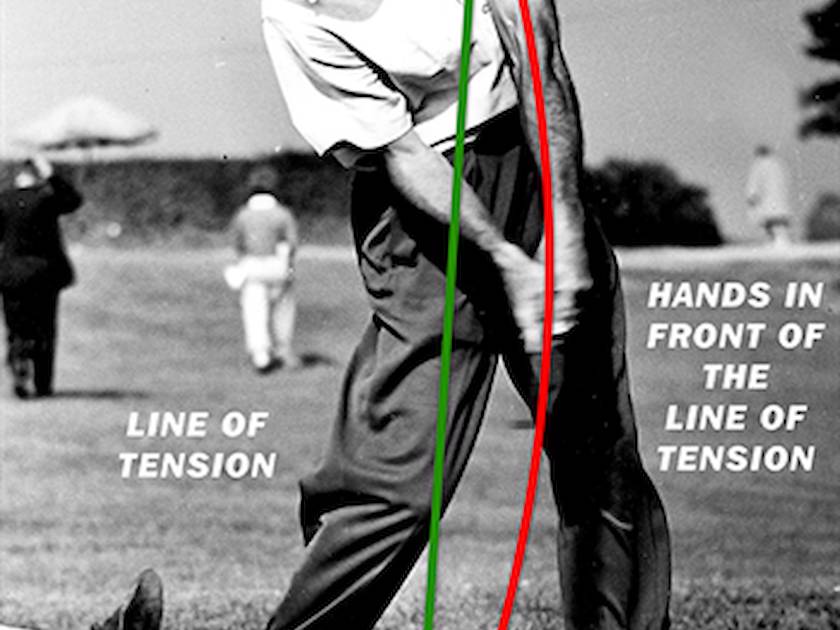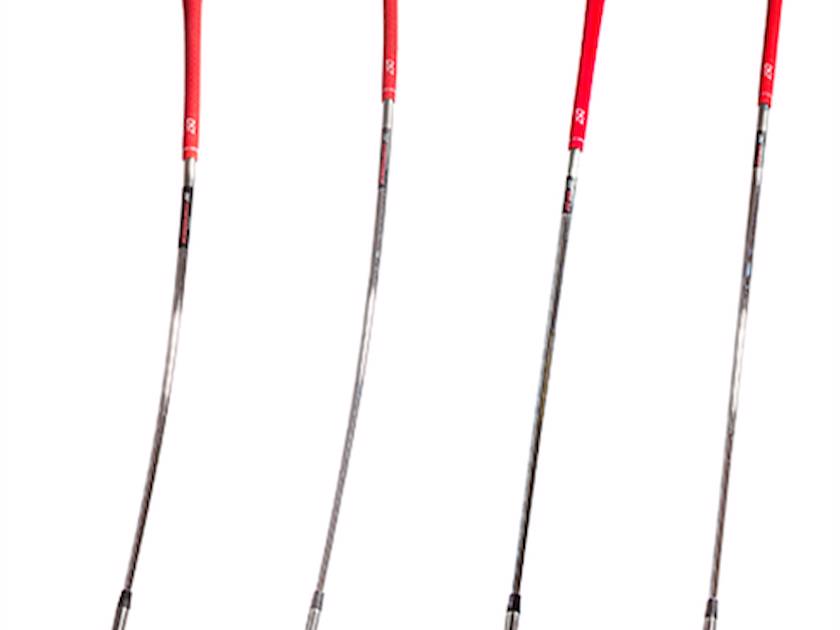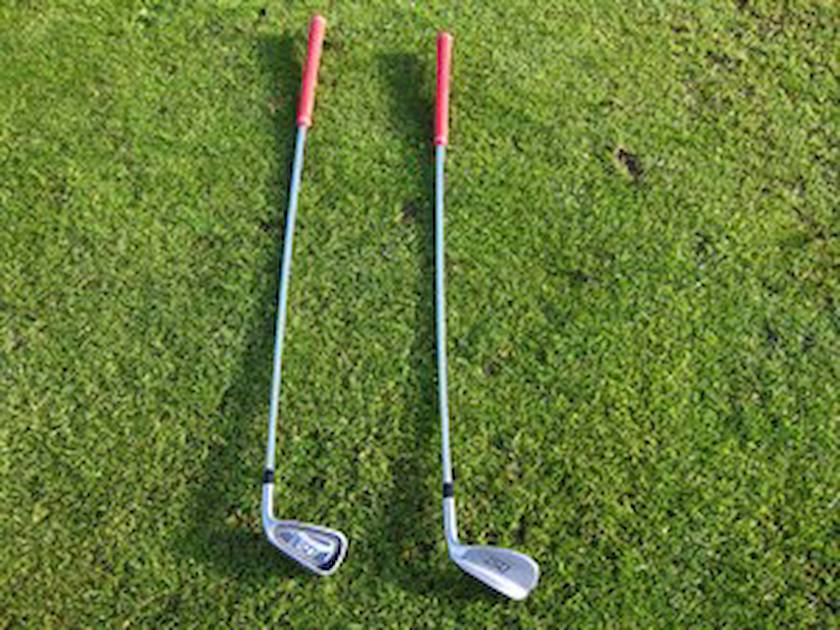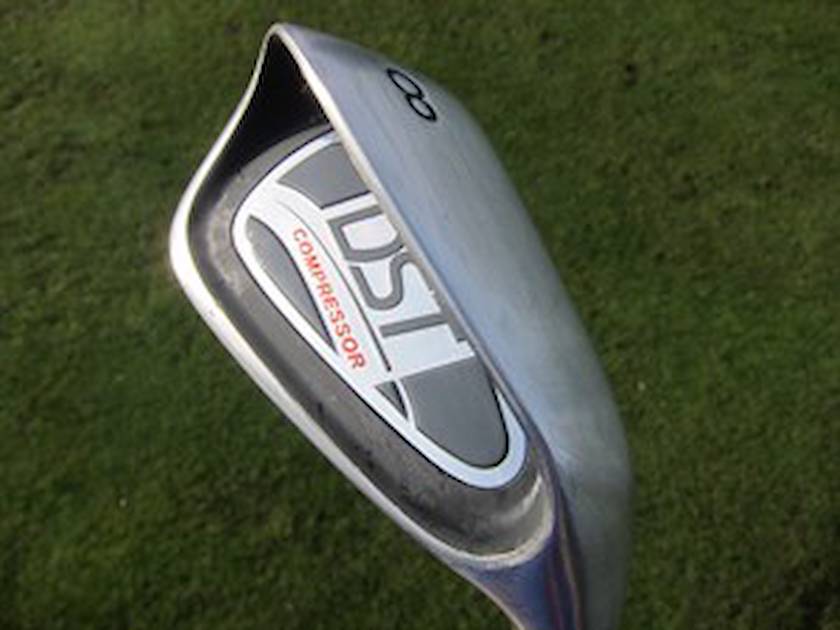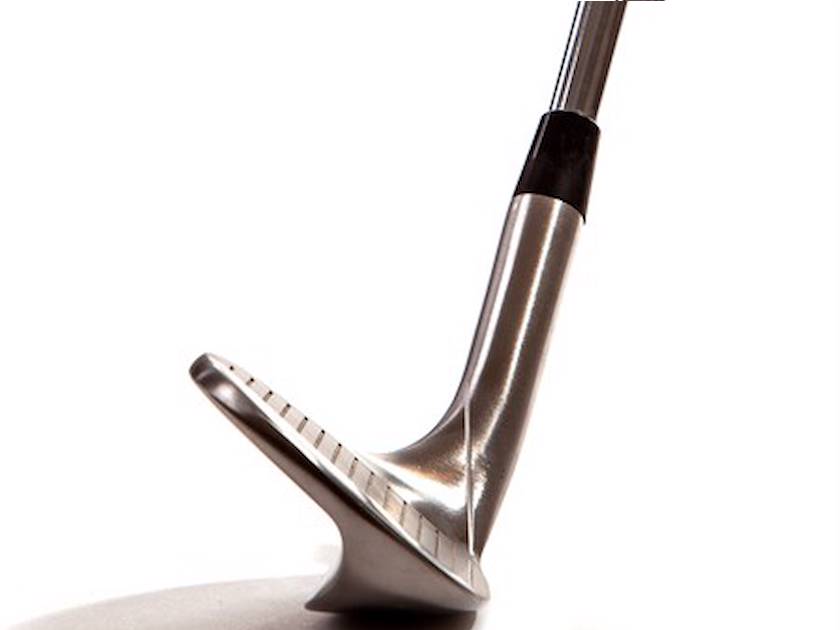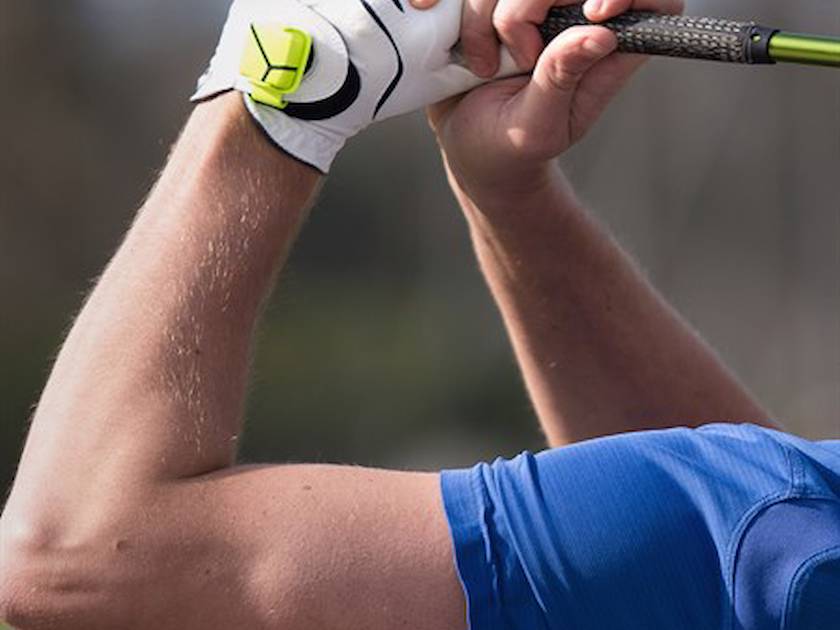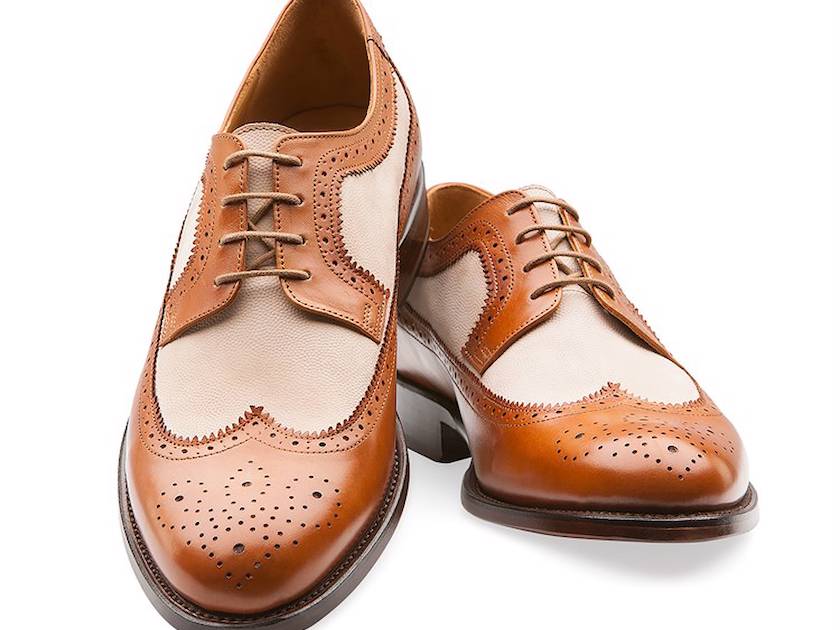DST Compressor – Golf's New Secret Weapon.
The name Bertie Cordle might sound like a character from a Harry Potter novel but he could just be the JK Rowling of golf.
Cordle is the man behind the DST Compressor training clubs that are taking tournament driving ranges by storm. These magic wands might look incongruous with a curved shaft forcing the hands well forward at address, but they could help unlock the ball-striking riddle we’re all trying to solve. Like Rowling, Cordle began with a homespun idea and faced a struggle to get noticed, but now his wizardry is in the hands of some of the world’s best players. And Cordle believes his creation could help some 60m golfers worldwide.
“I’m just a random punter with an idea,” says Cordle. “It’s a learning process which can take as little as two or three minutes and a light bulb going off in someone’s head.”
A weighty Concept. That idea – using his own Delayed Strike Technology (DST) - is to train the optimal impact position by encouraging the weight onto the front foot and the hands leading the clubhead through the ball. Get it wrong and the club will tell you – by producing hooks or shanks. But get it right, and ease one out of the sweetspot with a satisfying “thunk”, and it is like pushing open the door to a fantastic new world. “Ah, so THIS is what it feels like to be pro,” you might think.
“In golf, 99% of players don’t control the clubface until after the ball has been struck and that is down to one thing – the club shaft overtaking an extension of their lead arm,” says Cordle.“The DST Compressor aids the realization you shouldn’t be returning the club to the same position as you do at address to hit the ball properly. “In other words taking a divot after hitting the ball. If there is a secret in golf, that is it. It is as simple as that.”
In the Kitchen. Cordle’s tale took shape not in a coffee shop in Edinburgh, as Rowling’s multi-zillion-pound dreamworld did, but on his kitchen table and at Rushmore Golf Club in Wiltshire.His background was as a player on the European Challenge Tour “20-odd years ago” but a serious illness put paid to his competitive career. The yacht brokerage business provided a “lucrative” alternative, but wasn’t his passion. ”I took up golf again socially about five years ago but I got so frustrated I wasn’t hitting it as well as I used to so I thought I’d do some reading,” said Cordle.
“I read about the three players who I thought were the best ball strikers of all time - Moe Norman, Lee Trevino and Ben Hogan. I also read a book called The Golfing Machine by Homer Kelley, which used the most fantastic engineering descriptions using physics, pivots, leavers and masses and described the forces involved, but he was so complicated.
“I thought if I could build a golf club that would force people to feel what they’re trying to achieve, without reading 300 pages of fairly heavy physics, it would simplify the whole process.”
Clever Club. In 2012, Cordle set about designing his own clubs, but was initially stumped by how to make the pre-bent shafts. “I ended up inventing the machine that curved golf shafts because most shaft manufacturers had very little interest in making curved shafts,” he said.It took a further eight months to develop the clubheads with amended sole technology to ensure they line up correctly at address, and the “Hand Position Alignment Marker” – a strip on the hosel to align with the groove and your nose.
“In my playing career I didn’t use training aids, I thought they were the biggest waste of time,” he said. “But I thought, ‘I’m probably the best litmus paper test in the industry’ - “If it works for me then the market is huge, pretty much every single player in the world. That’s 60m people that would benefit from this. “The reason I can say that confidently is the optimal impact position is the same, whether you’re one of the world’s best like Henrik Stenson or a beginner.”
Eureka. But still, the theory was untested and Cordle faced an anxious wait until one foul Wiltshire day he received his first clubhead from the foundry he sourced to make them in China. “I glued it into the shaft and went up to Rushmore in the pouring rain,” he said. “I was so excited and was just laughing and dancing on the driving range thinking, ‘oh my God, it works’.
“There was a lot riding on this moment because I’d made a serious investment in developing the machine that makes shafts and spent a huge amount of time developing the clubhead. Quite a lot of the family questioned my sanity. “I had already given up the opportunity to continue working on my other business so I had given up two-and-a-half years of earning in order to pursue this project. When the ball flew straight with a good shot and went sideways with bad swing I thought, ‘this does work on every single level’.“Not only does it help get the hands forward but if the club falls out of plane you can feel it twisting and tweaking in the grip, so it works on levels I didn’t really anticipate.”
Armed not just with a magic wand but a swing-plane divining rod to boot, Cordle needed some validation. But he reckoned just pitching up with a curved shafted club at a tournament driving range would cut no ice.
The Pitch. Instead, he approached top coach Pete Cowen during the 2014 Volvo World Match Play at the London Club and explained the idea over a coffee.“He was very sceptical as you would expect a Yorkshireman to be, so I just left the club with him,” said Cordle. “The next time I saw him was at Doral and he was walking up and down the driving range like a drill sergeant getting his stable of players to hit the club.”
A visit to Butch Harmon’s academy in Las Vegas was met with similar indifference.
“Butch wasn’t there but his number two said they had no interest in training clubs,” said Cordle. “But the tumble-down effect of Cowen’s players using them came to the fore and shortly after Butch got back in touch and asked if I could send some over. He came up to me at the recent Tour Championship in Atlanta and said they were phenomenal.”
According to Cordle, Justin Rose says the club is “magic” and has asked for the shaft to be made a bit longer and the club regripped twice, while Stenson, Martin Kaymer and Dustin Johnson are also advocates.“We had 220 PGA and European Tour players using the clubs after nine months and we have had 25 winners this year,” he says.
“It has gone better than I expected in terms of Tour useage. I thought all these guys swing the club perfectly well anyway, and that it would be more for mid-handicaps, but they love it because it confirms what they should be feeling.”
Six-time European Tour winner Simon Dyson is another devotee.
“If you want to improve your technique and strike the ball better, it’s the thing to have,” said Dyson. “It’s so easy to use. It makes sure you have your hands in the right place, and it builds consistency. I started using it in March. I use it every day.”
The Future is Bright. Alongside the DST Compressor is Cordle’s CR10, which is a straight-shafted club with the same amended sole technology and Hand Position Alignment Marker.The R&A recently ruled the HPAM is a “conforming component” and therefore legal on playing clubs. Suddenly, a whole new market beckons.
“The next stage is the nuclear button,” says Cordle. “We’re reviewing the strategic options with a view to licensing the technology to mainstream manufacturers.“I would be disappointed and upset for golfers around planet if I walked into a pro shop in five years’ time, or less, and did not find an original equipment manufacturer that didn’t have DST technology in their clubheads.
“They are all running out of ideas. The only thing that has not been done is making clubs that help customers swing better, which opens up a tremendous window of opportunity.“The training club market is relatively small, about $80m worldwide, but the mainstream golf club market is about $5.5bn year.
“We’re just essentially trying to help more golfers become better golfers and we’re trying to sort of pick our way through a minefield to get the technology into the largest number of hands as soon as possible. “So far, so good. Clearly there is a lot to think about and continue to work on. Apart from the blue-sky thinking there are the constant challenges of running a young business. It’s a nerve-racking time, but it tremendously exciting.”
Golf’s had game-changers before but Cordle’s creation, like Rowling’s Potter, could be set to explode. Golf’s very own Philosopher’s Stone, capable of turning even the rustiest swings into gold.
